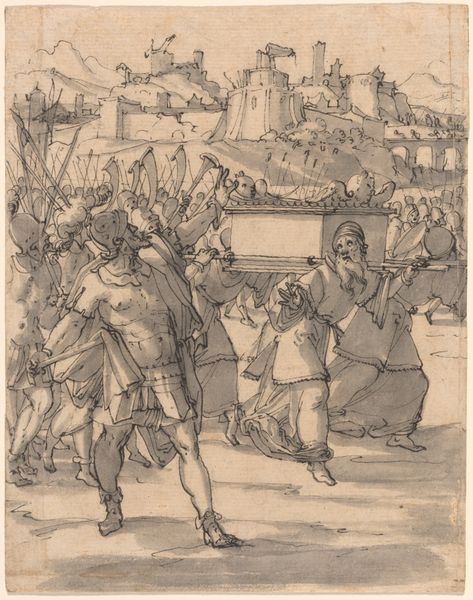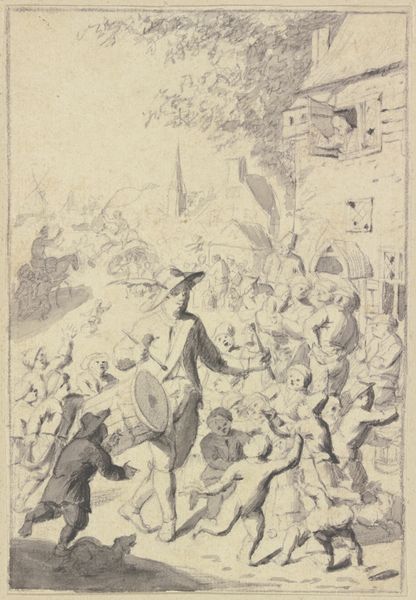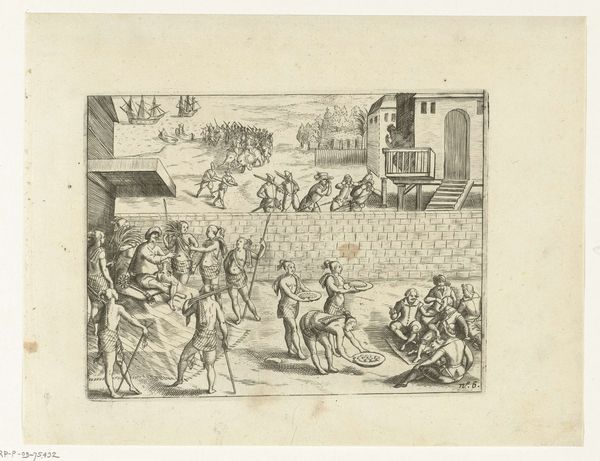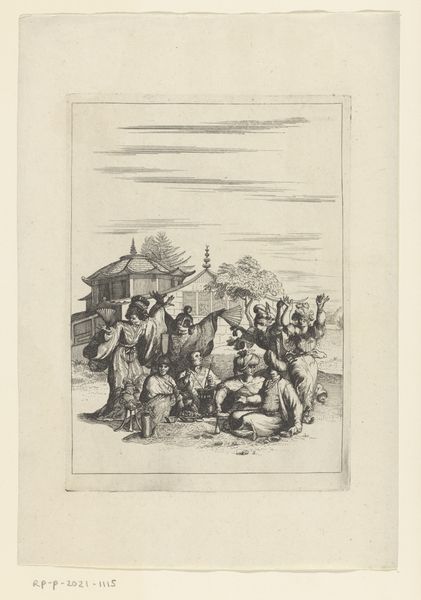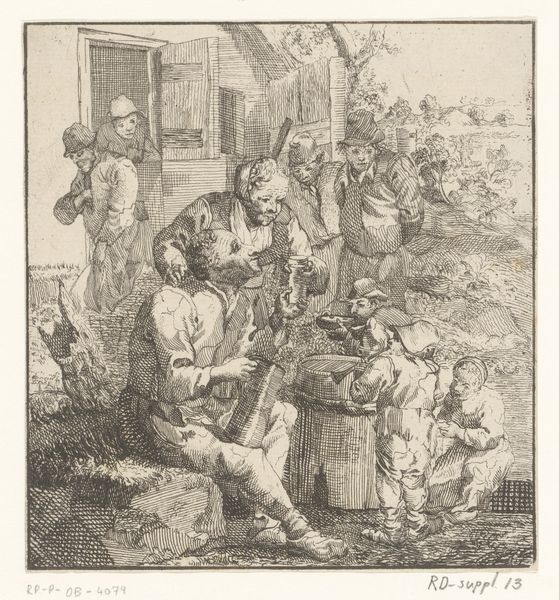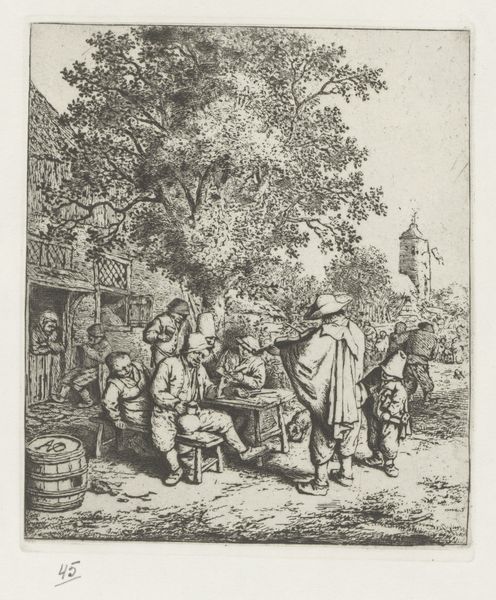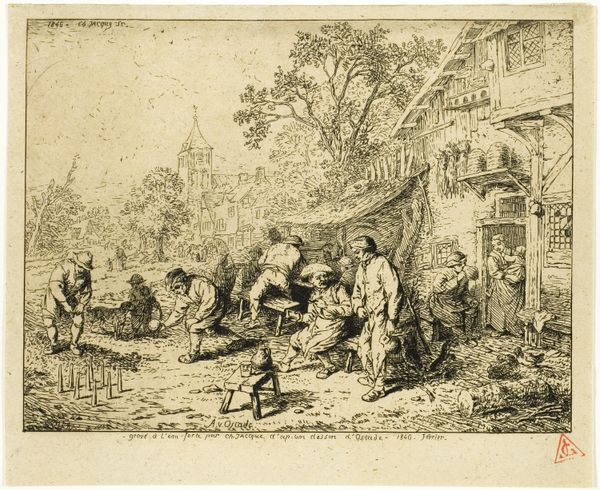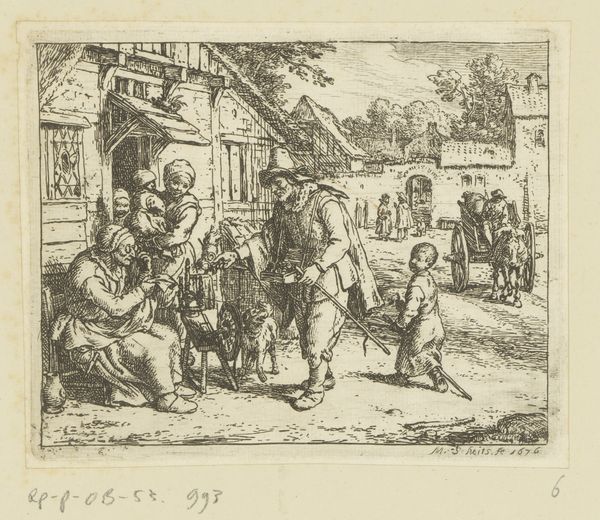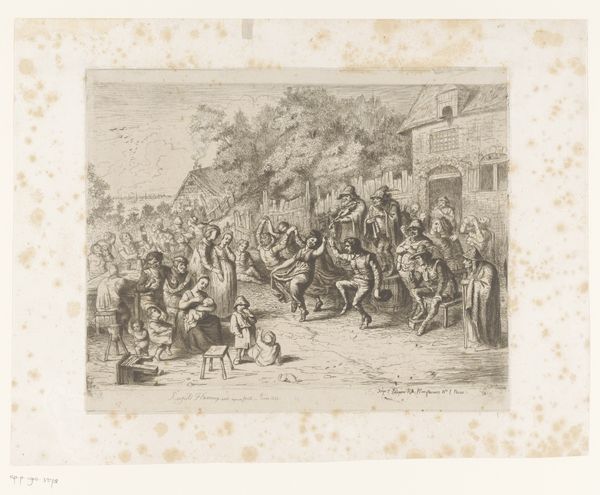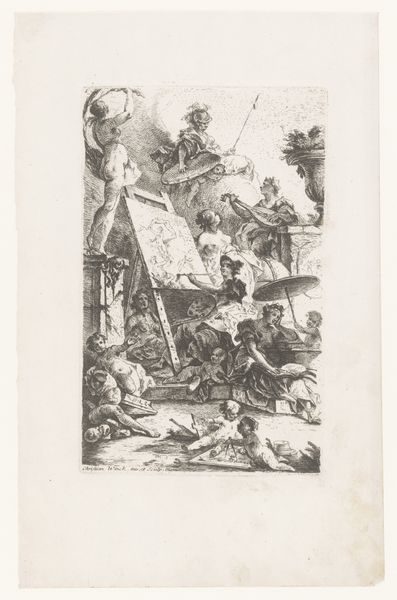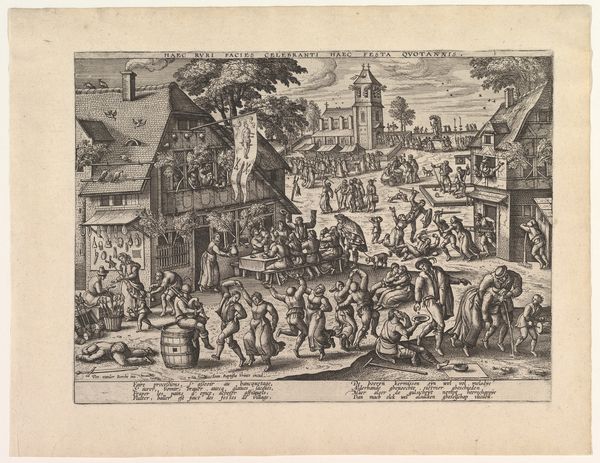
print, engraving
#
baroque
# print
#
old engraving style
#
landscape
#
figuration
#
line
#
genre-painting
#
engraving
Dimensions: height 189 mm, width 128 mm
Copyright: Rijks Museum: Open Domain
Editor: Here we have Frans Greenwood's "Tamboer op een boerenkermis", an engraving from between 1733 and 1760. It depicts a drummer leading a joyous procession of children at what appears to be a village fair. The sheer number of figures crammed into the scene creates such a lively, chaotic energy. What is your interpretation of this work? Curator: The composition, seemingly chaotic as you observed, speaks volumes about the socio-cultural function of such gatherings. The 'boerenkermis,' or peasant fair, was a sanctioned space where social hierarchies could be temporarily inverted. The drummer, rather than a military figure, is here a pied piper of sorts, leading the children – often marginalized voices – into a moment of collective joy and temporary freedom from the rigid structures of 18th-century society. Notice how Greenwood, though working within the Baroque tradition of detailed figuration, uses a simplified linework? What effect does this choice of medium and style have? Editor: It almost flattens the scene, making it feel less about individual portraits and more about a generalized depiction of community revelry. I wonder if this approach made the print more accessible and affordable for a broader audience. Curator: Precisely! Printmaking was a democratic medium, disseminating images and ideas beyond the elite. The affordability of this print suggests it was meant to circulate widely, possibly reinforcing and shaping perceptions of peasant life among different social classes. Did the image celebrate this way of life, or perhaps subtly critique it? Was it romanticising or satirizing the peasantry? What do you think about this double layered message in art? Editor: It’s interesting to consider how the same image could have been interpreted in such different ways depending on the viewer's social standing. I see it now, it really encapsulates how art can simultaneously reflect and influence social perceptions. Thank you for pointing it out! Curator: Indeed. The Tamboer becomes a mirror reflecting the complex social dynamics of its time and this kind of fair are one element of temporary "cultural freedom". We also had to remind ourself this picture exists only in the eye of the viewer, nothing is certain but opinions based on backgrounds.
Comments
No comments
Be the first to comment and join the conversation on the ultimate creative platform.
